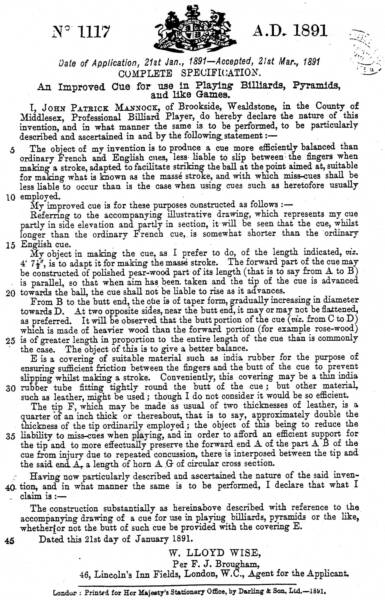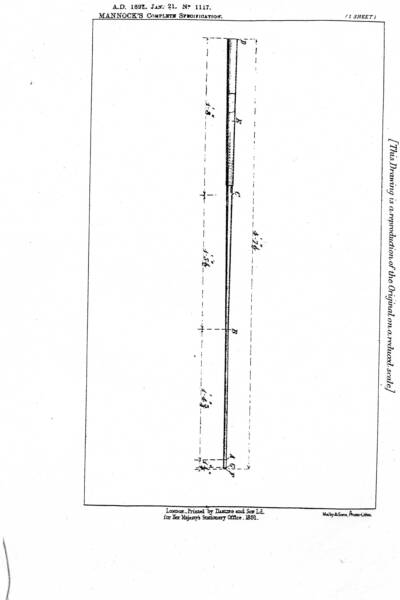This is a copy of the patent granted to J.P. Mannock in March 1891 for an improved cue for use in playing billiards, pyramids and like games. The patent reveals a lot, not only about Mannock's cue, but also about what cues were ordinarily like in 1891.
Mannock's 1891 patented cue was described as 4' 7½" (55½ inches) in length, so as to make it more suitable for masse strokes. Interestingly, this was also the length of the cue used by the first recognised champion of English billiards, Jonathon Kentfield. It was the recognised length of cues up until the 1920s.
The shaft is described as polished pearwood. Pearwood was probably chosen because it is smoother than ash or maple and will not stick to the fingers. Hence, the description "Anti-Grip" which is applied to many Mannock cues.
Mannock's patent contemplates that the first 16¾ inches of the shaft would be "parallel" or, in other words, have no taper. This prevents the cue from rising when a stroke is made. It also makes it easier to play a stroke off the cushion. Many cues from around that time were made without a taper.
Mannock describes a butt of 18 inches in length, which is slightly longer than normal. Mannock envisaged that the longer butt would be made from a heavier wood. He refers to rosewood. This design was intended to give the cue better balance, by bringing weight forward.
The patent calls for an indian rubber sleeve fitted tightly around the butt of the cue, to prevent slippage during a stroke. You sometimes hear today of Mannocks with their original indian rubber cover. These claims need to be treated with great caution. It is highly unlikely that any genuine indian rubber cover has survived to contemporary times. I do not know of any examples that have been verified by an expert.
The patent refers to a leather tip a quarter inch thick. Mannock tells us that this was about twice the thickness of tips usually employed at the time. The thicker tip was intended to prevent mis-cues.
Mannock also contemplates that the cue would have a horn ferrule in order to protect the forward end of the shaft. Burroughes & Watts remained true to this specification until around 1963, when they changed from horn ferrules to fibre ferrules.

